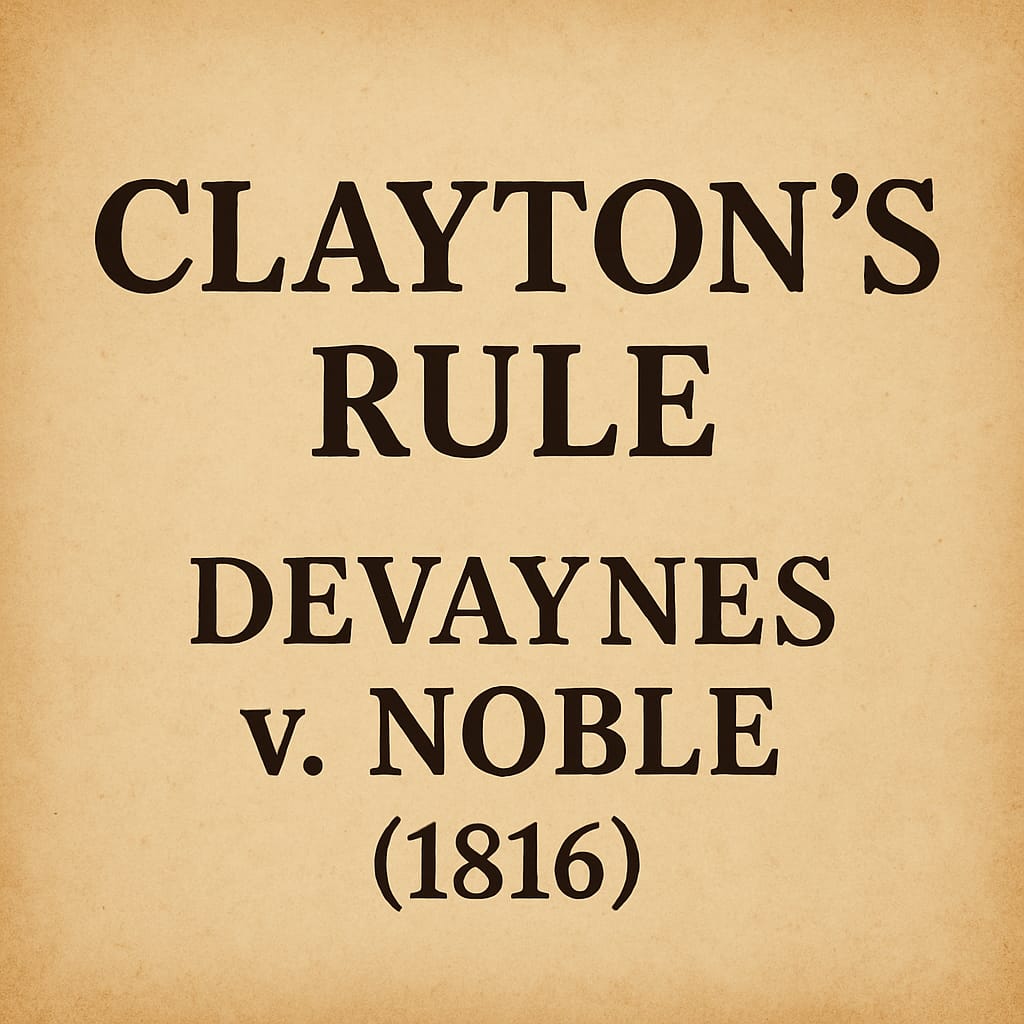
Devaynes v. Noble (1816), a judgment commonly known as Clayton’s case as it laid
down the rule.
It is to be noted that this rule applies only when there are several debts and not
when there is a single debt.
Devaynes v. Noble (1816)
Mr. Clayton had an account with a banking firm, Devaynes, Dawes, Noble, and Co,
that was a partnership.
The bank’s partners were therefore personally liable for the debts of the bank.
One of the partners, William Devaynes died in 1809. The amount then due to
Clayton was £1,717.
After Mr. Devaynes’ death, Clayton made further deposits with the bank and the
surviving partners paid out to Mr. Clayton more than the £1,717 on deposit at the
time of Mr. Devaynes’ death. The firm went bankrupt in 1810.
It was held that the estate of the deceased partner was not liable to Clayton. The
payments made by the surviving partners to Clayton must be regarded as
completely discharging the liability of the firm to Clayton at the time of the
particular partner’s death.
